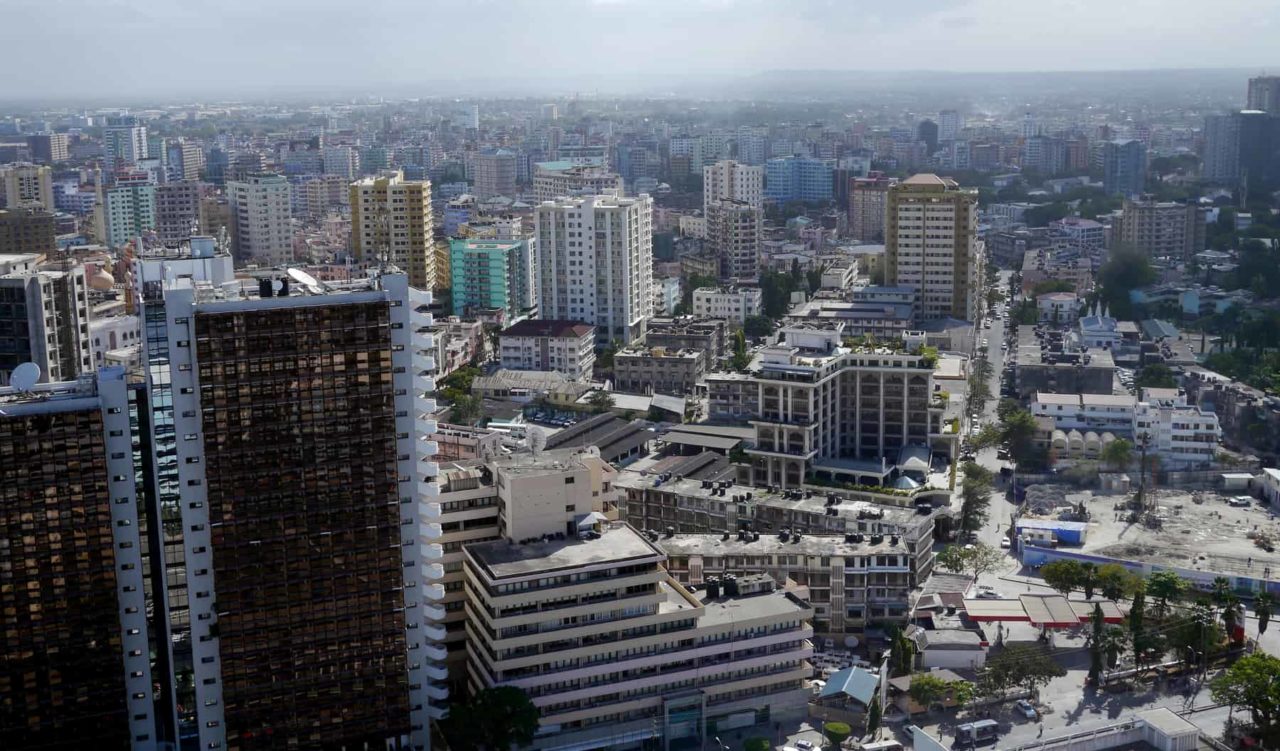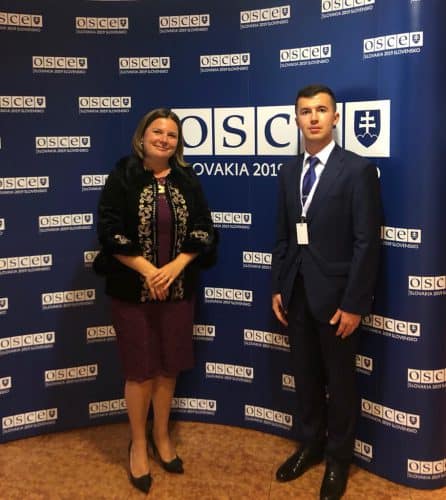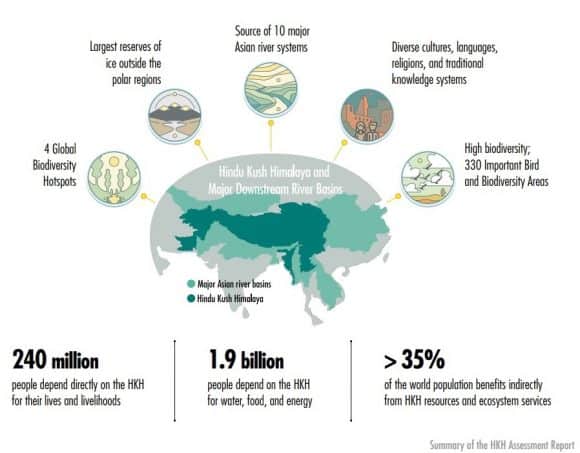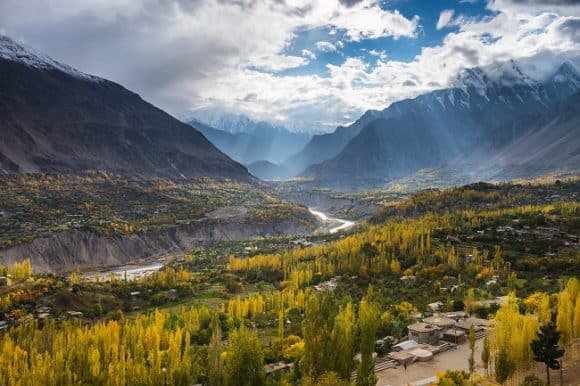Oct 22, 2020 | Climate Change, Energy & Climate, Science and Policy
By Shorouk Elkobros, IIASA Science Communication Fellow
Assessing energy-related choices and the behaviors of households can help us transition to a low-carbon economy. How can research provide more effective decision-making tools to policymakers for better climate change mitigation policies?
We live at a defining moment for climate change, where today’s actions affect tomorrow’s reality. Every little climate-friendly decision counts. Whether we decide to insulate our houses, put solar panels on our rooftops, or invest in energy-efficient appliances. However, our personal and energy-related decisions vary based on our awareness, age, education, income, energy provider services, social norms, culture, and many other factors. Researchers are starting to pay attention to how this diversity is not well represented in the economic models that politicians use to plan climate change policies.

@ VectorMine | Dreamstime.com
Designing policies inspired by people
Households contribute an average of 70% of global greenhouse gas emissions. Limiting global emissions requires holistic policy approaches that take households’ behaviors and lifestyle decisions into account. Adding such a dimension can potentially upscale low carbon behavioral and social changes to national and global levels, which is fundamental to tackling climate change.
Worried about the future of the planet and motivated to support policymakers in designing better climate change mitigation policies, the authors of a recent study published in the journal Environmental Modeling & Software aspired to build bridges through interdisciplinary research. The study presented a novel interdisciplinary method that aims to integrate households’ energy behavior and social dynamics in climate-energy-economy models and thus help politicians design policies inspired by people.
“I have always been interested in the science-policy-society aspect of mitigating climate change. Climate change is a collective challenge that we need to address together to come up with better solutions for future generations,” notes study lead author Leila Niamir, a researcher jointly associated with the Mercator Research Institute on Global Commons and Climate Change, Berlin and the IIASA Transitions to New Technologies Program.
Better models for a better future
Climate change mitigation policies play a pivotal role in achieving ambitious environmental targets like the Paris Agreement or the Sustainable Development Goals (SDGs). To be able to formulate appropriate mitigation policies, decision makers need assessment tools to measure complex systems quantitatively. In the past decade, a variety of assessment tools have emerged, which have since been predominantly used to support climate change policy debates. In the study, Niamir argues that current assessment models are missing bottom-up and grassroots dynamics, they cannot project realistic variables of what households’ lifestyles and social movement are, and they therefore may not be sufficient to provide reliable information for policymakers.
There is a gap between what policymakers’ current assessment tools can offer and what social scientists and behavioral economists highlight as pro-environmental behavior and climate change mitigation movements. By adding this complex behavior and social perspective to the models, the researchers make it easier for policymakers to design future policies to accommodate different societal behaviors and lifestyles.
Niamir and her team presented a novel method for systematically upscaling grassroots dynamics by linking the best of both “top-down” macroeconomic computable general equilibrium (CGE) models and “bottom-up” empirical agent-based models (ABM). Their approach demonstrates that with computational ABM directly linked to survey data and macroeconomic CGE models, individual behavioral diversity and social influences can be considered when designing implementable and politically feasible policy options.
“We need better assessment tools to quantitatively explore the complex climate-energy-economy system, and reveal the potential of demand-side mitigation strategies. To see substantial changes, we need a mix of external interventions, from soft information policies aimed at raising awareness bottom-up, to financial incentives altering the macro landscape of energy markets and technological transitions. Only modular and integrated models can help policymakers quantitatively explore this complex system and plan for changes in the coming decades,” says Niamir.
Towards a low-carbon economy
We cannot tackle what we do not know. Pathways to a low-carbon economy future entail diminishing the growing discrepancy between mitigation policies and individual and collective behaviors. When redesigning our socio-environmental systems to mitigate climate change, we need to start looking at people as case studies rather than numbers. To transition to a low-carbon economy and accelerate decarbonization, policymakers must adopt novel models that integrate energy consumption, individual behavior, heterogeneity, and social influence into current assessment tools.
In 2019, IIASA and the Research Institute of Innovative Technology for the Earth (RITE), Japan co-organized an international workshop towards improved understanding, concepts, policies, and models of energy demand, where Niamir presented her research and received the young scientist award to continue and extend her research.
“Mitigating climate change indeed requires a massive effort from individual and social movements to advance national and international collaboration. Each individual small step towards shrinking our carbon footprint creates cascading changes in social behavior and consequently mitigates climate change,” Niamir concludes.
Reference:
Niamir L, Ivanova O, & Filatova T (2020). Economy-wide impacts of behavioral climate change mitigation: linking agent-based and computable general equilibrium models. Environmental Modelling & Software 134: e104839. [pure.iiasa.ac.at/16671]
Note: This article gives the views of the authors, and not the position of the Nexus blog, nor of the International Institute for Applied Systems Analysis.
May 26, 2020 | Energy & Climate
Jarmo Kikstra, a research assistant in the IIASA Energy Program, shares his experience at EGU2020: Sharing Geosciences Online.

© Freepik
When our abstract for the 2020 General Assembly of the European Geosciences Union (EGU2020) was accepted, I was very excited as this would be my first scientific conference. EGU2020 was a few weeks ago and took place completely virtually for the first time due to COVID-19. Let’s reflect upon what this experience was like.
As an early career researcher, I was very much looking forward to presenting the research I have worked on for many months. While I had presented preliminary results of this and other research before, both at my university and at my research department, these presentations had been internal or small-scale. EGU2020 was the first time presenting my research to the public, with experts from various fields being able to see the work and provide their input. It felt to me, like a first step into entering the pubic academic debate, an important step into becoming part of a research community.
But clearly, with the ongoing COVID pandemic, the conference was quite different to what I had expected my first conference to be like. EGU2020 became “EGU2020: Sharing Geoscience Online”. With 16,273 scientists participating last year, clearly a big effort took place to move such an event online, and with 26,219 individual online registrations in the online chat system, it seems to have been a success. But of course, not all registrations are equal, and participation numbers are not the only thing that count. So, how was this virtual EGU2020 experience for me?

© Jarmo Kikstra
First, my experience was much shorter than originally envisaged. While this is largely a matter of choice, I, and many other participants, participated in fewer sessions than we would have done during a physical conference. The simple fact of not being ‘out of office’ contributed to me continuing to work on other ongoing tasks for large parts of the week.
However, the chat session and oral presentation session I joined, were surprisingly intense. Many presentations (that would have normally been poster presentations) were discussed in a plenary chat or oral session, and there was little time (~6 min) available for each presentation, meaning that content was very dense, and discussed at breakneck speed. In this way, a snapshot of the current state of research in my field was provided openly with everyone seeing all comments and all presentations in the session. Something that was missing that could have been useful, by complementing the main chat box, were separate channels for each presentation. This could have made follow-up discussions in the chat sessions easier, without interrupting main discussions on the current presentations, and therewith stimulating one of the most important parts of conferences – feedback on the work you have presented.
Proponents of virtual events will argue that doing this will greatly reduce the environmental footprint of science, as (air) travel is the biggest chunk of GHG emissions of many scientists. In fact, a central debate at EGU2020 discussed this topic, and the first question of the Cercedilla Manifesto reads: “Is a physical meeting necessary?”. Opponents however point to the current impossibilities of replacing the benefits of meeting in-person, including higher engagement, getting an academic network, unexpected (group) discussions, social encounters and events, and the possibility for live feedback, etc. Especially for early career scientists, it is often said that attending conferences is very beneficial.
Networking virtually will never be exactly the same as in person, and I don’t think this is something to aim for. Networking can happen in many different formats; however, it is clear to me now that we can still take quite a few steps into increasing the effectiveness of virtual networking during such events. For instance, I did not ‘meet’ new people, whereas that would have surely happened during a physical meeting, even if I would not have actively made an effort. So perhaps when organizers are putting together a virtual event, it may pay off to be creative in providing virtual networking opportunities.
Many argue that an online event is also much more conducive to opening up science, with an enormous potential for increasing the accessibility to science and scientific discussions and stimulating the development of knowledge. The great success of EGU2020 is probably already in its name: “Sharing Geoscience Online”. On the EGU2020 website you can find thousands of presentations, on all topics that are related to geosciences, with many contributions from IIASA. In other words, a lot of research content has been uploaded to one place, open to everyone; thereby turning this scientific event into a great resource for sharing, learning, asking questions and providing feedback. Discussions on this platform will be ongoing until the end of the month. So, take advantage of this opportunity and have a look!
Note: This article gives the views of the author, and not the position of the Nexus blog, nor of the International Institute for Applied Systems Analysis.
Feb 20, 2020 | Climate, Energy & Climate, Women in Science, Young Scientists
By Chibulu Luo, PhD student at the University of Toronto (Civil Engineering) and 2016 Young Scientists Summer Program (YSSP) participant.
Luo’s recent publication in the Journal of Cleaner Production considers the needs of the poorest and most vulnerable communities when exploring policy insights for Dar es Salaam’s energy transition.
Global discourse on sustainability rarely focuses on the Africa region as a key player in the global transition towards a cleaner low-carbon energy future. Filling this critical gap in the research is what has stimulated my doctoral studies.

Dar es Salaam © Timwege | Dreamstime
According to a recent report from the International Energy Agency, the Africa region contributed only 3.7% towards global energy-related GHG emissions in 2018, which perhaps explains why the region has remained largely ignored in current research on energy. However, with colleagues at the University of Toronto and Ontario Tech University, I assert that the growth of large cities such as Dar es Salaam should be critically considered in global efforts on climate change mitigation. My recently published paper estimates to the year 2050, the potential changes in residential energy use and GHG emissions in Dar es Salaam, among Africa’s most populous and fastest-growing cities. Like many African cities,contributes little to global GHG emissions; however, our paper projects a substantial increase in future emissions by the year 2050 – up to 4 to 24 times– which is quite overwhelming. According to our findings, this jump in emissions is due to a higher urban population in 2050 (expected to triple from 5 million in 2015, to as much as 16 million in 2050), and increased energy access and electricity consumption.
In developing these future estimates, we used the Shared-Socio-Economic Pathways (SSPs), developed by IIASA researchers, as a guiding narrative. While there may be some uncertainties with projecting GHG emissions pathways several years into the future, our findings could derive insights to the emissions pathways of other large African cities, and the critical role that these cities can play in global efforts to achieve the 1.5-degree, or even, 2-degree global warming target.

© Chibulu Luo
I first heard about the SSPs as a participant in the IIASA YSSP in 2016; this period was a tremendous time of growth and reflection in terms of my research direction. The opportunity to work amongst such a talented group of scientists in a collaborative environment and on issues that are globally relevant was an unforgettable experience. I especially enjoyed working with colleagues in the IIASA Risk and Resilience Program, where some of my early research ideas were formulated. At that time, I focused largely on resilience measures for infrastructure development in African cities, including Dar es Salaam.
Note: This article gives the views of the author, and not the position of the Nexus blog, nor of the International Institute for Applied Systems Analysis.
More updates from IIASA alumni or information on the IIASA network may be found here.
Jun 12, 2019 | Economics, Energy & Climate, Eurasia, Young Scientists
By Dmitry Erokhin, Research Assistant in the IIASA Advanced Systems Analysis Program
Dmitry Erokhin shares his thoughts on the promotion of economic progress and security through energy cooperation, good governance, and connectivity in the digital era.

Nadejda Komendantova and Dmitry Erokhin at the OSCE EEF meeting in Bratislava © Dmitry Erokhin
From 27 to 28 May 2019, Bratislava hosted the Second Preparatory Meeting of the 27th Economic and Environmental Forum of the Organization for Security and Cooperation in Europe (OSCE EEF) on “Promoting economic progress and security in the OSCE area through energy cooperation, new technologies, good governance and connectivity in the digital era”.
As part of my work on digitalization in Greater Eurasia, I was particularly interested in attending this meeting.
A major part of the event was devoted to questions surrounding energy security, which is a very important factor of cooperation in the OSCE area. All 57 participating states across North America, Europe, and Asia are interested in stable energy supply. Doing energy right is a way to promote progress, security, and prosperity. Orientation towards sustainable development, limiting the use of conventional energy sources, oil conflicts, and cyber attacks make both energy demanders and suppliers search for new solutions. In this regard, the use of renewable resources promises long-term benefits in terms of energy efficiency, new jobs, as well as a secure and resilient energy sector. This is however not possible without peace, which makes the protection of infrastructure crucial. There is no prosperity without peace and no peace without prosperity.
I found it particularly valuable that new technologies were included in the discussion. Blockchain – a system in which a record of transactions made in bitcoin or another cryptocurrency are held across several computers that are linked in a peer-to-peer network – along with big data, are creating new opportunities in the energy sector, for example, in terms of new forms of energy trading. However, they can also pose some risks as they create certain dependencies, thus raising questions of sustainability. For instance, automated driving raises many regulatory issues on how to ensure against cyber attacks and missiles, or how to divide responsibilities between producers and users. Advanced technologies have to be employed safely and efficiently. International organizations could play a vital role in enacting common standards and regulatory norms for digitalization and connectivity in this regard. One grand example here is the single window recommendation, which is a trade facilitation idea that enables international traders to submit regulatory documents at a single location. The idea is that such a system would facilitate trade through good governance.
The establishment of regional communication platforms and the development of science, research, and innovations are of particular importance. Key agents need to talk about secure and clean energy. This could be achieved through intra-institutional cooperation and inclusive dialogue. I believe that institutions like IIASA can play a huge role here.
Talking about new technologies, it is an important task to conduct studies on barriers to trade, especially in the context of blockchain and machine learning technologies in digital trade in order to detect inefficiencies at borders and improve market access. In the energy field, there are many controversial estimates (simultaneously in favor of conventional and renewable energy sources), which also make independent reputable studies essential.
Nadejda Komendantova, a researcher with the Advanced Systems Analysis Program at IIASA also represented the institute at the OSCE meeting, where she moderated a session on protecting energy networks from natural and man-made disasters. The sessions’ participants discussed the impact of these factors on energy security, analyzed opportunities and threats for secure energy networks connected with new technologies, raised questions of resilience, and talked about the mitigation of threats through effective policies and cooperation. The OSCE Critical Energy Infrastructure Protection (CEIP) Digital Training Platform was presented during the session.
To conclude, I would like to emphasize that we need more such constructive and fruitful discussions to catalyze trust, growth, security and connectivity. Partnerships create political will and make open dialogue and mutual support very important. I believe that organizations like IIASA are key to making this possible.
Note: This article gives the views of the author, and not the position of the Nexus blog, nor of the International Institute for Applied Systems Analysis.
May 24, 2019 | Energy & Climate, Poverty & Equity, Sustainable Development
By Pallav Purohit, researcher with the IIASA Air Quality and Greenhouse Gases Program
More than 300 million people in Hindu Kush Himalaya-countries still lack basic access to electricity. Pallav Purohit writes about recent research that looked into how the issue of energy poverty in the region can be addressed.
The Hindu Kush Himalayas is one of the largest mountain systems in the world, covering 4.2 million km2 across eight countries: Afghanistan, Bangladesh, Bhutan, China, India, Myanmar, Nepal, and Pakistan. The region is home to the world’s highest peaks, unique cultures, diverse flora and fauna, and a vast reserve of natural resources.
Ensuring access to affordable, reliable, sustainable, and modern energy for all – the UN’s Sustainable Development Goal (SDG) 7 – has however been especially elusive in this region, where energy poverty is shockingly high. About 80% of the population don’t have access to clean energy and depend on biomass – mostly fuelwood – for both cooking and heating. In fact, over 300 million people in Hindu Kush Himalaya-countries still lack basic access to electricity, while vast hydropower potentials remain largely untapped. Although a large percentage of these energy deprived populations live in rural mountain areas that fall far behind the national access rates, mountain-specific energy access data that reflects the realities of mountain energy poverty barely exists.

Source: Wester et al. (2019)
The big challenge in this regard is to simultaneously address the issues of energy poverty, energy security, and climate change while attaining multiple SDGs. The growing sectoral interdependencies in energy, climate, water, and food make it crucial for policymakers to understand cross-sectoral policy linkages and their effects at multiple scales. In our research, we critically examined the diverse aspects of the energy outlook of the Hindu Kush Himalayas, including demand-and-supply patterns; national policies, programmes, and institutions; emerging challenges and opportunities; and possible transformational pathways for sustainable energy.
Our recently published results show that the region can attain energy security by tapping into the full potential of hydropower and other renewables. Success, however, will critically depend on removing policy-, institutional-, financial-, and capacity barriers that now perpetuate energy poverty and vulnerability in mountain communities. Measures to enhance energy supply have had less than satisfactory results because of low prioritization and a failure to address the challenges of remoteness and fragility, while inadequate data and analyses are a major barrier to designing context specific interventions.
In the majority of Hindu Kush Himalaya-countries, existing national policy frameworks currently primarily focus on electrification for household lighting, with limited attention paid to energy for clean cooking and heating. A coherent mountain-specific policy framework therefore needs to be well integrated in national development strategies and translated into action. Quantitative targets and quality specifications of alternative energy options based on an explicit recognition of the full costs and benefits of each option, should be the basis for designing policies and prioritizing actions and investments. In this regard, a high-level, empowered, regional mechanism should be established to strengthen regional energy trade and cooperation, with a focus on prioritizing the use of locally available energy resources.

© Kriangkraiwut Boonlom | Dreamstime.com
Some countries in the region have scaled up off-grid initiatives that are globally recognized as successful. We however found that the special challenges faced by mountain communities – especially in terms of economies of scale, inaccessibility, fragility, marginality, access to infrastructure and resources, poverty levels, and capability gaps – thwart the large-scale replication of several best practice innovative business models and off-grid renewable energy solutions that are making inroads into some Hindu Kush Himalayan countries.
This further highlights an urgent need to establish supportive policy, legal, and institutional frameworks as well as innovations in mountain-specific technology and financing. In addition, enhanced multi-stakeholder capacity building at all levels will be needed for the upscaling of successful energy programs in off-grid mountain areas.
Finally, it is important to note that sustainable energy transition is a shared responsibility. To accelerate progress and make it meaningful, all key stakeholders must work together towards a sustainable energy transition. The world needs to engage with the Hindu Kush Himalayas to define an ambitious new energy vision: one that involves building an inclusive green society and economy, with mountain communities enjoying modern, affordable, reliable, and sustainable energy to improve their lives and the environment.
References:
[1] Dhakal S, Srivastava L, Sharma B, Palit D, Mainali B, Nepal R, Purohit P, Goswami A, et al. (2019). Meeting Future Energy Needs in the Hindu Kush Himalaya. In: The Hindu Kush Himalaya Assessment. pp. 167-207 Cham, Switzerland: Springer. ISBN 978-3-319-92287-4 [pure.iiasa.ac.at/15666]
[2] Wester P, Mishra A, Mukherji A, Shrestha AB (2019). The Hindu Kush Himalaya Assessment: Mountains, Climate Change, Sustainability and People. Cham, Switzerland: Springer. ISBN 978-3-319-92287-4.
Note: This article gives the views of the author, and not the position of the Nexus blog, nor of the International Institute for Applied Systems Analysis.
Jan 11, 2019 | Alumni, Energy & Climate, IIASA Network, Water, Women in Science, Young Scientists
By Lu Liu, postdoctoral research associate at Rice University, USA and IIASA YSSP 2016 participant
I have been attending the American Geophysical Union (AGU) Fall Meeting since 2013 when I was working with the Joint Global Change Research Institute. Ever since then, the AGU Fall Meeting has become one of my most anticipated events of the year where I get to share my research and make new friends.
The first time I attended the AGU Fall Meeting, I was overwhelmed with the size and scale of this conference. There are more than 20,000 oral and poster presentations throughout the week, and the topics cover nearly 30 different themes, from earth and space science, to education and public affairs. I was thrilled to see my research being valued and discussed by people from various backgrounds, and I was fascinated by other exciting research and rigorous ideas that emerged at the meeting.

Lu Liu at 2018 AGU poster session
At this year’s AGU, I presented my poster Implications of decentralizing urban water supply infrastructure via direct potable water reuse (DPR) in a session titled Water, Energy, and Society in Urban Systems. In a nutshell, my poster presents a quantitative model that evaluates the cost-benefits of direct potable water reuse in a decentralized water supply system. The concept of decentralization in an urban water system has been discussed in previous literature as an effective approach towards sustainable urban water management. Besides the social and technical barriers in implementing decentralization, there is a lack of analytical and computational tools necessary for the design, characterization, and evaluation of decentralized water supply infrastructure. My study bridges the gap by demonstrating the environmental and economic implications of decentralizing urban water infrastructure via DPR using a modeling framework developed in this study. The quantitative analysis suggests that with the appropriate configuration, decentralized DPR could potentially alleviate stress on freshwater and enhance urban water sustainability and resilience at a competitive cost. More about this research and my other work can be found here: https://emmaliulu.wixsite.com/luliu.
At the AGU Fall Meeting, I engaged in various opportunities to reconnect with old colleagues and build new professional relationships. What’s better than running into my former YSSP supervisors and IIASA colleagues after two years since I left the YSSP? Although my time spent at IIASA was short, I hold IIASA and the YSSP very close to my heart because the influence this experience has had on my professional and personal life is profound.
I will continue to attend the AGU Fall Meeting for the foreseeable future. After all, we all want to feel a sense of belonging and acceptance in a community, and I am glad I already found mine.
Note: This article gives the views of the author, and not the position of the Nexus blog, nor of the International Institute for Applied Systems Analysis.










You must be logged in to post a comment.